Bottle vs. tap: 7 things to know about drinking water
Concern over drugs in drinking water doesn't necessarily mean it's time to stock up on bottled water
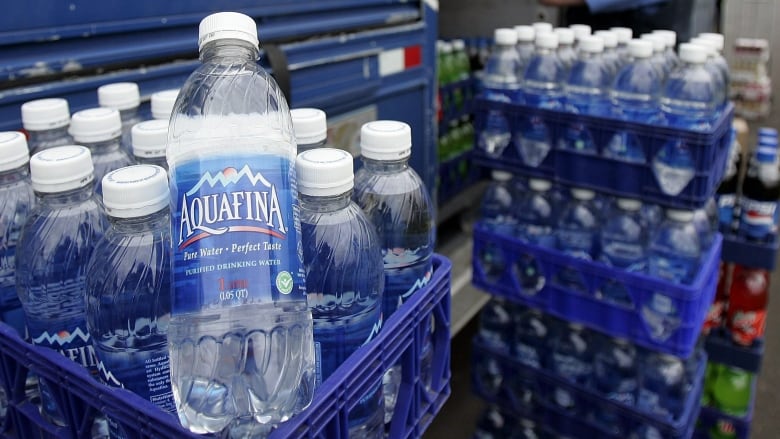
Recent reportsof drugs in our drinking water might have some people heading for the bottled water aisle of their nearest grocery store, but in most parts of Canada, choosing bottled water over tap is a matter of taste or convenience, not health.
Unless you live in a community that lacks water treatment facilities which, even after theWalkertonwater crisis of 2000, is still a reality for some Canadians, including many First Nations chances are the water coming out of your tap is perfectly safe to drink.
That didn'tstopCanadians from purchasing 2.4 billion litres of bottled water last year,or about 68 litres percapita, accordingto a market analysis by Euromonitor International.
The bottled water industry is worth more than $170 billion, and North Americansare some of its most avid consumers, so much so that in the U.S., bottled water has surpassed milkand beer in terms of volume sold. In Canada, three out of 10 households drink bottled water at home, according to Statistics Canada.
1. Water quality
Tap water is regulated by Health Canada and the provinces and territories. The Guidelines for Canadian Drinking Water Quality spell out the maximum levels of potentially harmful substances that are allowed in drinking water. Municipalities test their water sources constantly to make sure they are within these limits.
The City of Ottawa, for example, conducts more than 125,000 water quality tests a year. Toronto tests water samples every four to six hours and checksfor more than 300 potential chemical contaminants.
The results of this monitoring are generally easily accessible to the public, oftenon city websites or by request.
Bottled water is not subject to the sameguidelines because itis classified as a food and falls under the Food and Drugs Act. Aside from arsenic, lead and coliform bacteria, the act does not set limits on specific contaminantsbut says simplythat food products cannot contain "poisonous or harmful substances" and must be prepared in sanitary conditions.
Spring and mineral water is subject to a few more rules: itmust be fit for humanconsumption at thesource andcan't be treated in any way that would modify its composition, other than by adding carbonation, ozone or fluoride.
2. Self-policing industry
Monitoring of water quality in the bottled water industry is"essentially voluntary and internally regulated," a 2009study by the Polaris Institute, an Ottawa-basednon-profit environmental advocacy group, found.

The Canadian Food InspectionAgency (CFIA) does conduct inspections of bottled water plants,but the Polaris Institutefound that these are done on average once every threeyears.
The CFIA said in an email to CBC News that it inspects and takes enforcement action "as required" if it becomes aware of a potential food safety hazard "via a complaint or other means."
"Given that bottled water has an excellent safety record in Canada,CFIA's planned inspection activities are currently focused on commodities that present a higher risk to human health and safety," the agency said.
There have beenefforts to introducestricter bottled water guidelines, but these have been stalled for years, largely leaving the industry topolice itself.
Companies that belong tothe Canadian Bottled Water Association (CBWA), which represents about85 per cent of the industry, are supposed to follow certainbest practices when it comes to monitoring water quality and submitto annual inspections by a third party,but compliance isvoluntary.
Provinces can impose stricter regulations, but sofar, only Quebec has done so. Its bottled water regulationsets limits on metals and other contaminantsand requires labels to specify the water's origin.
3. Labels don't tell full story
Outside of Quebec, labels on bottled water that is not spring or mineral water don't have to specify the source of the water, even if that source is your municipalwater supply.
The CBWA says less than eight per cent of bottled water sold in Canada comes from municipal sources, but in the U.S., scientist Peter Gleick has estimated it's as much as 45 per cent.

Some brands, such as Aquafina, have since put that information on the label, but it's not a requirement as long as the label isn't explicitly misleading.
In the U.S., Nestl's Poland Spring water, which is not sold in Canada, was the subject of a class-action lawsuit that alleged the company was mislabelling the water as "naturally purified" spring water from "pristine and protected sources...deep in the woods of Maine,"when it fact it was groundwater being drawn from man-made wells, some of which, the lawsuit alleged, were at risk of contamination.
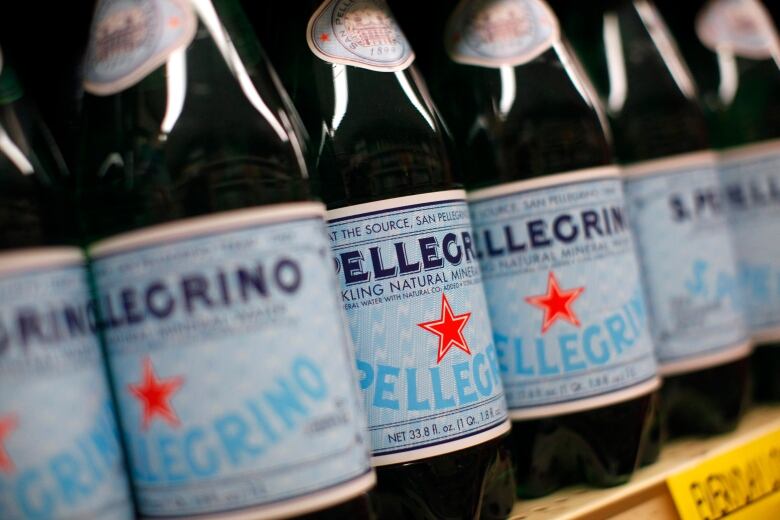
Bottled water labels in Canada dohave to specify how the water was treated and whether it contains fluoride and mustlist any added ingredients. Mineral and spring water must specify themineral salt contentwhilewater that has had the bulk of its minerals filtered outmust be labelled "demineralized."
Some brands specify an expirationdate, although this is not required, and there is disagreement on whether water if kept sealed and stored in cool conditions that don't promote the growth of bacteria can ever "expire."The industry has said bottled water has a shelf life of two years, but Health Canadasuggests replacing water after one year while the U.S. Food and Drug Administration considers it to have an indefinite shelf life.
4. No clear health risks
Health Canada considers all bottled waterthat meets thestandards set out in the Food and Drugs Act"comparable from a health and safety perspective" and says the water sold in Canada is generally of good quality and doesn't pose any health hazard.
Illnesses associated with bottled water are rare, but like tap water, it can become contaminated.The Polaris Institutefound that there were 29 recalls of 49 bottled water productsbetween 2000 and 2009 because of contamination byeverything from bacteria tomould toarsenic and "extraneous material" such as glass.
The Canadian Food Inspection Agency was unable to provide more currentfigures, but onerecent casewas the2013 recall of water from Blue Glass Water Co.(Caledon Clear Water Corp.) because ofbacterial contamination.
In 2004, a voluntaryDasanirecall in the U.K. attracted international attention after Coca-Cola found levels ofbromatein the water exceeded legal limits.

Othershaveraised the pointthat water that has been demineralized either through commercial or household filtration mightdeprive those who drink it of the beneficial effects of essential minerals such as magnesium and calcium.
There have also been concerns over the potential leaching of antimony trioxide, a suspected carcinogen used in the manufacturing of the polyethylene terephthalate plastic (known as PET or PETE)that water bottles are made of, but studies by Health Canada and others have shown that the levels found in bottled water are not a health risk.
BisphenolA, the controversial compound found in some plastics,is nota concern with PET water bottles.
5. What about the drugs?
Many of the companies that sell bottled tap water claim their product tastes better than what comes out of your faucet.
To achieve that "improved"taste, bottlers use additional treatment anddisinfection processes that reducepotentialcontaminantsand don't leave the same odour and taste as thecheaper chlorine disinfection used by many municipal watertreatmentsystems.
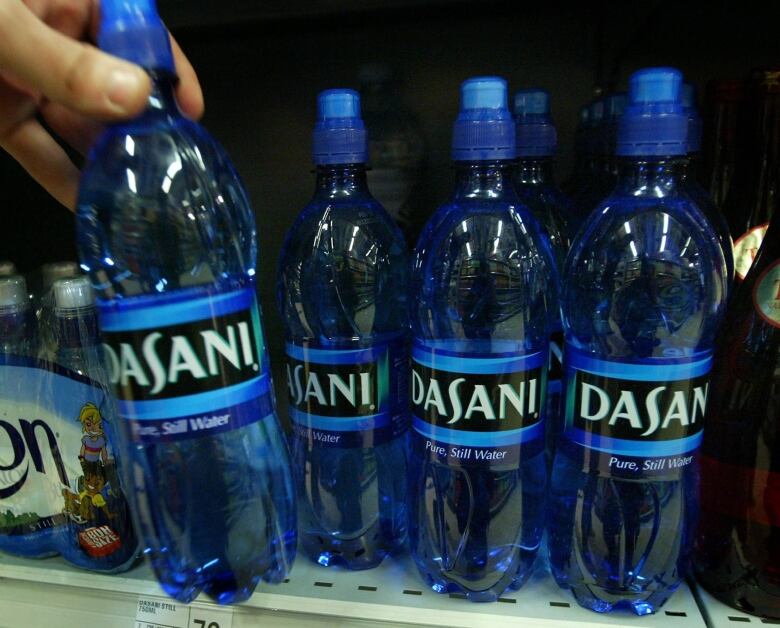
Scientific studies have shown that ozonation, reverse osmosisand carbon filtration have the capacity to eliminate some organic compounds like thepharmaceuticals detectedindrinking water, butbottled water is generally not tested for such compounds.
Some householdcarbon filters can serve the same purpose for tap water. The standards organization NSF International, which certifies the vast majority of water treatment chemicals and equipment, has tested and certified 23 products to date that have the ability to reduceeight types of prescription and over-the-counter medications and expects to add more in the coming year.
The filters are labelled NSF/ANSI 401, but that certification also includes pesticides and compounds like bisphenol A, so consumers should use the NSF websiteto verify whichspecific contaminants a product filters.
Carbon filtration at the municipal level is less effective at capturing pharmaceutical compounds, says Rick Andrew, a water quality expert with NSF.
"When you're in a residential system or a bottling plant, you tend to have a special filter that's been designed to have a lot of contact with the water and do quite a bit of treatment to it whereas in a municipalenvironment, usually, the carbon is just kind of floated in a tank,and it's there mainly to help improve the taste of the water," he said.

For many municipalities, it's not worth investing in sophisticated treatment systems that filtersuch compounds given that the trace levels found in drinking water have not proven to be a health risk.
"With some of the pharmaceuticals, you could drink the water every day for your entire life and not even end up with one clinical dose," Andrewsaid.
Mineral and spring water, which comes from groundwaterrather than surface waterlike lakes and rivers, is likely less susceptible to such chemicals, which generally showup inwastewatereffluent. Municipal water can come from groundwateror surface water.
6. Cost
Bottled water can cost anywhere from about eight cents per 500 ml bottle of house brand spring water bought in bulk at a large grocery store chain to $2.50 for a high-end brand like Fiji or Evian in avending machine.
Tap water, meanwhile, costs Canadianson the order of tenths of a cent per litre.
Much of the water corporations sell is obtained on the cheap frompublicwater sources.Many provinces do require bottlers to obtain permits to extract this waterbut charge very little for the privilege.
Nestlpays a mere$3.71 for every million litres of water it draws from a well nearHillsburgh, Ont., andhas permissiontowithdraw1.13 million litres of groundwater per day.
Ontariorequires all industrial or commercial facilities that use morethan 50,000 litresa day to pay the $3.71fee and obtain a permit, but not all provinces do. Until recently, B.C. did not regulate industrial groundwater use and allowed Nestl to extractmillions of litres a year from a well in Hope, B.C.,for free.
7. Environmental impact
Although many companies have tried to cut down on the amount of plastic they use and increase the proportion ofrecycled and compostablematerials, the industry still generates significant waste and consumes water and fossil fuels in the process of bottling and transporting its products in some cases, from as far as France or Fiji.
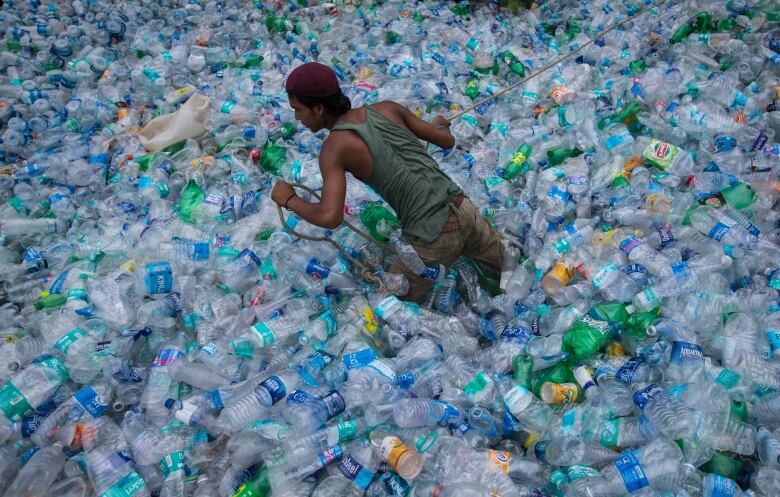
The CBWA says plastic bottles account for only one-fifth of one per cent of landfill, but once there, they can take hundreds of years to decompose and may not decompose at all given that most landfills don't have enough heat, light and oxygento break down much of anything outside of organic matter.
About 70 per cent of PET drink containers in Canada are recycled, according to the CanadianBeverage Association, although recycling rates vary by province.
Some of that plastic waste gets shipped abroad for recycling creating more greenhouse gases in the process.
(You might be tempted to reuse your empty water bottle to give it a second life, butreuse can increasethe risk of bacteria and the leaching of potentially harmful chemicals although studies have found that the levels of leached compounds like antimony in bottled water are far below what's considered safe and do not pose a health risk.)
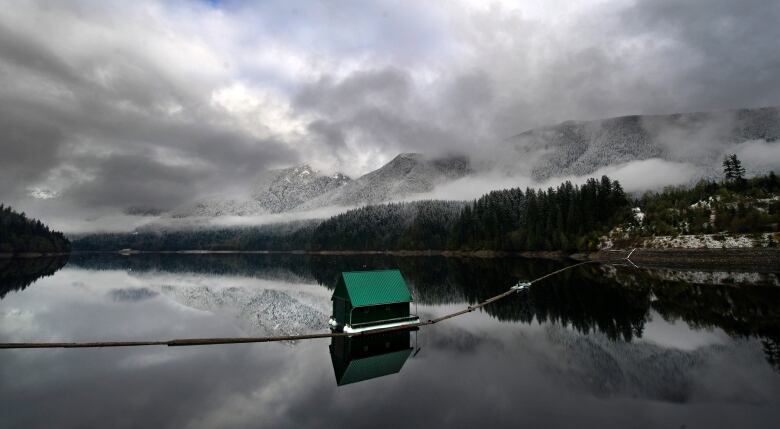
ThePacific Institute, which conducts research on water use and conservation, has estimated that bottled water is up to 2,000 times more energy-intensive than tap water. In2006 alone, bottling water for U.S. consumption used the energy equivalent of 17 million barrels of oil and produced2.5 million tons of carbon dioxide, it found.
Increasingly, federal and local governments, as well as some university campuses, are finding those costs too high and are adopting restrictions onbottled water. Toronto has banned the sale of bottled water at all municipal facilities and parks, and other city administrations and government departments have also moved to limit public spending on bottled water, including Vancouverand Environment Canada, which said it has reduced its purchases of bottled water by 90 per cent since 2007/08.
In the U.S., San Francisco, Miami, New York state, Colorado and parts of the U.S. National Park Service have all put limits onbottled water. San Francisco's baneven extends to food trucks regulated by the city.












_(720p).jpg)


 OFFICIAL HD MUSIC VIDEO.jpg)
.jpg)



























































































